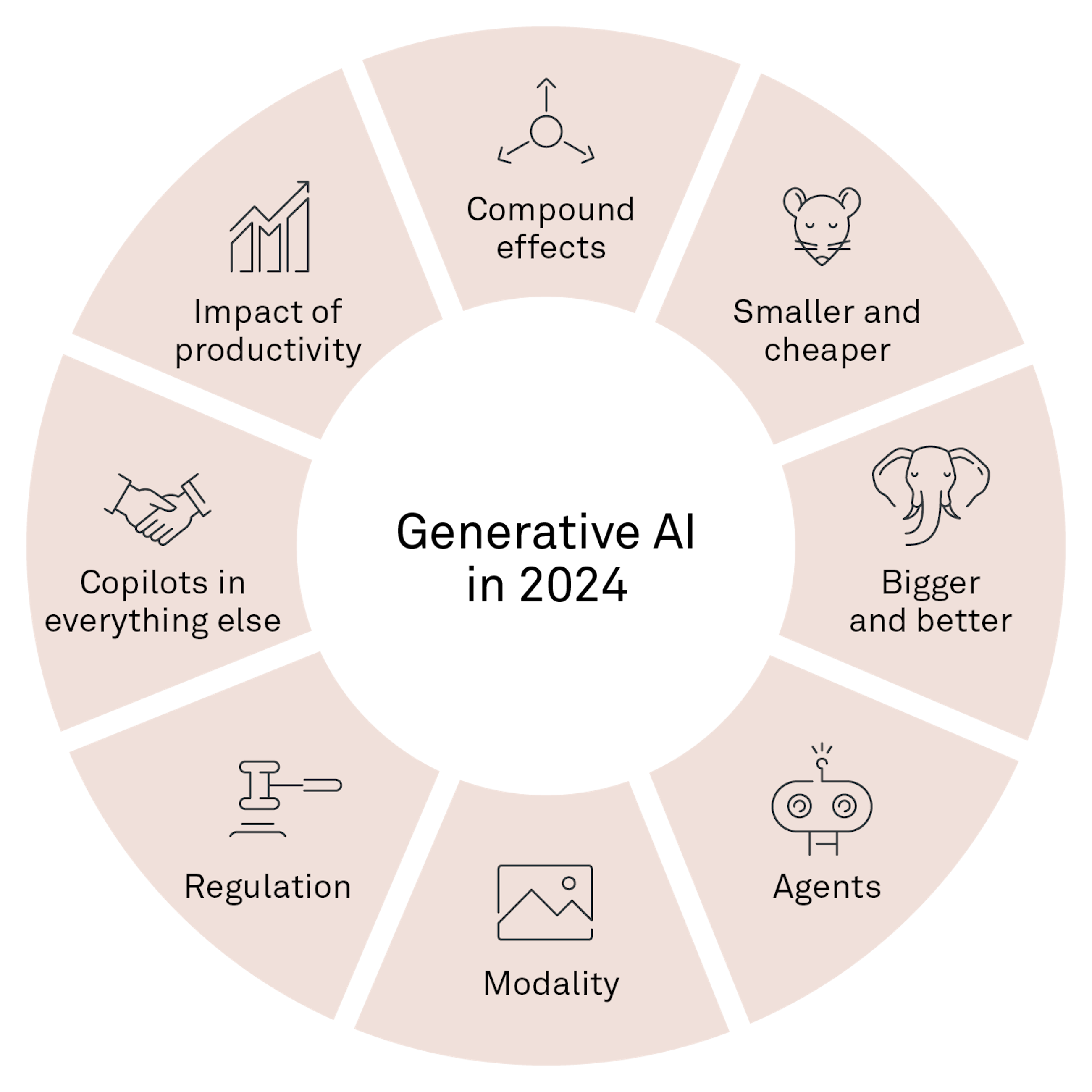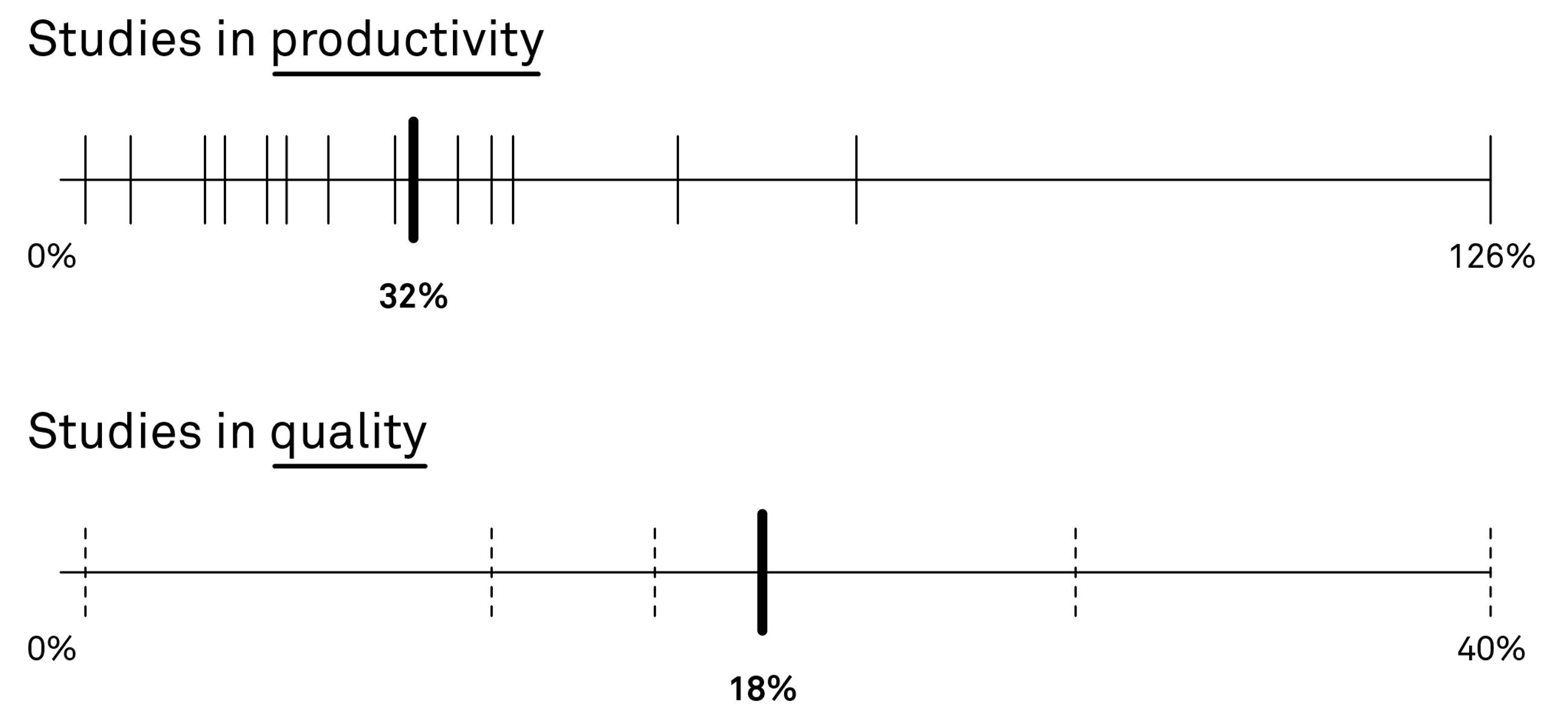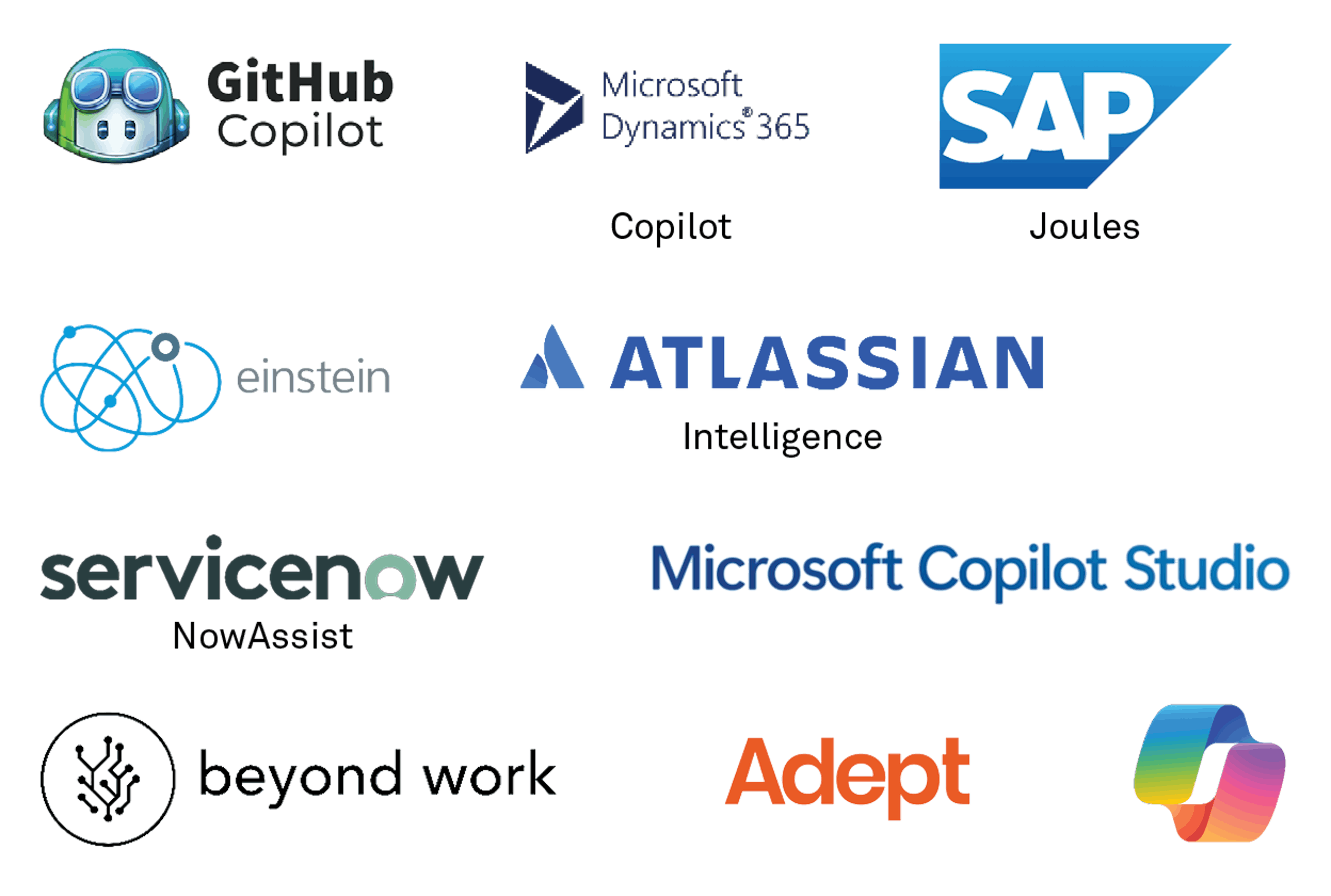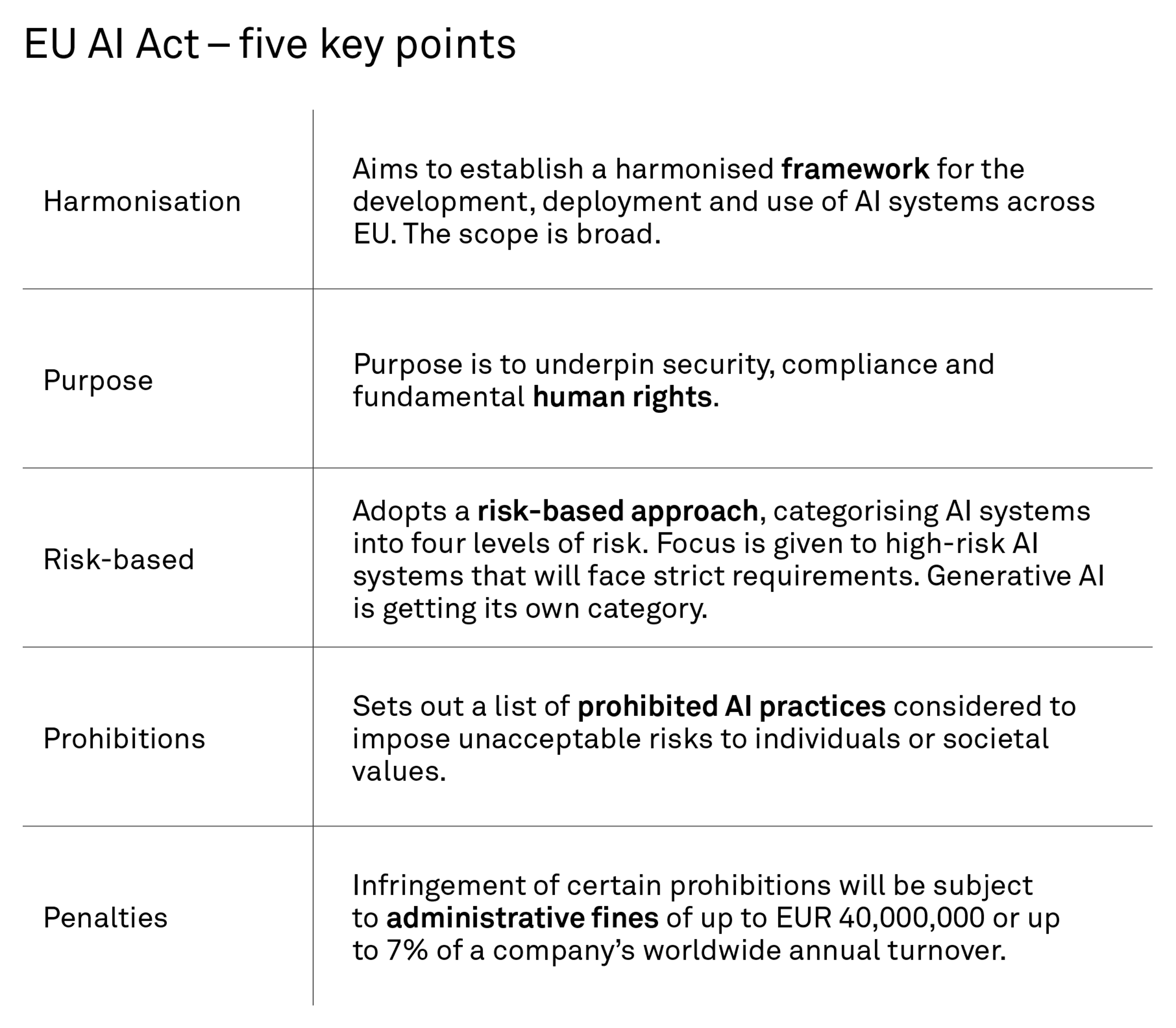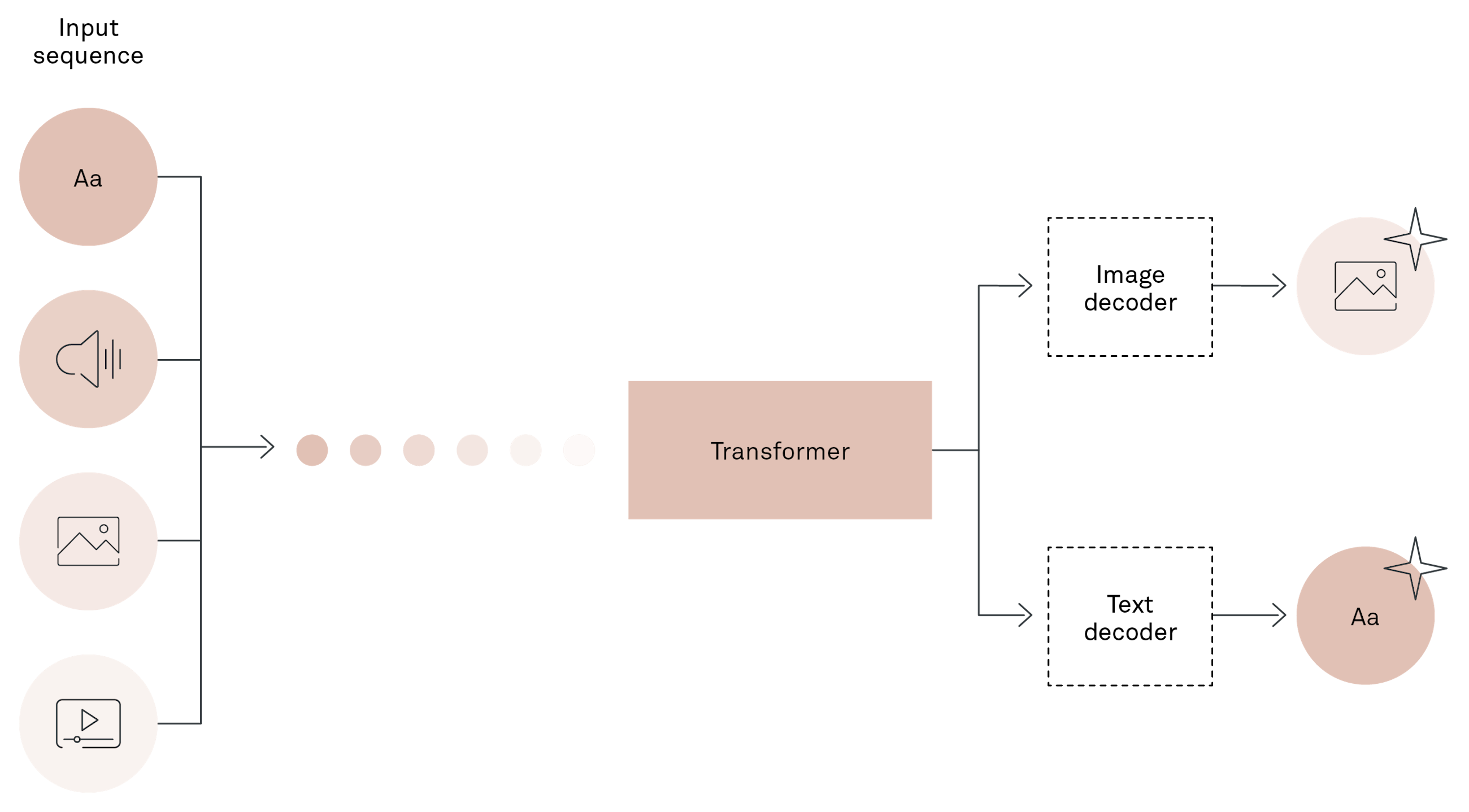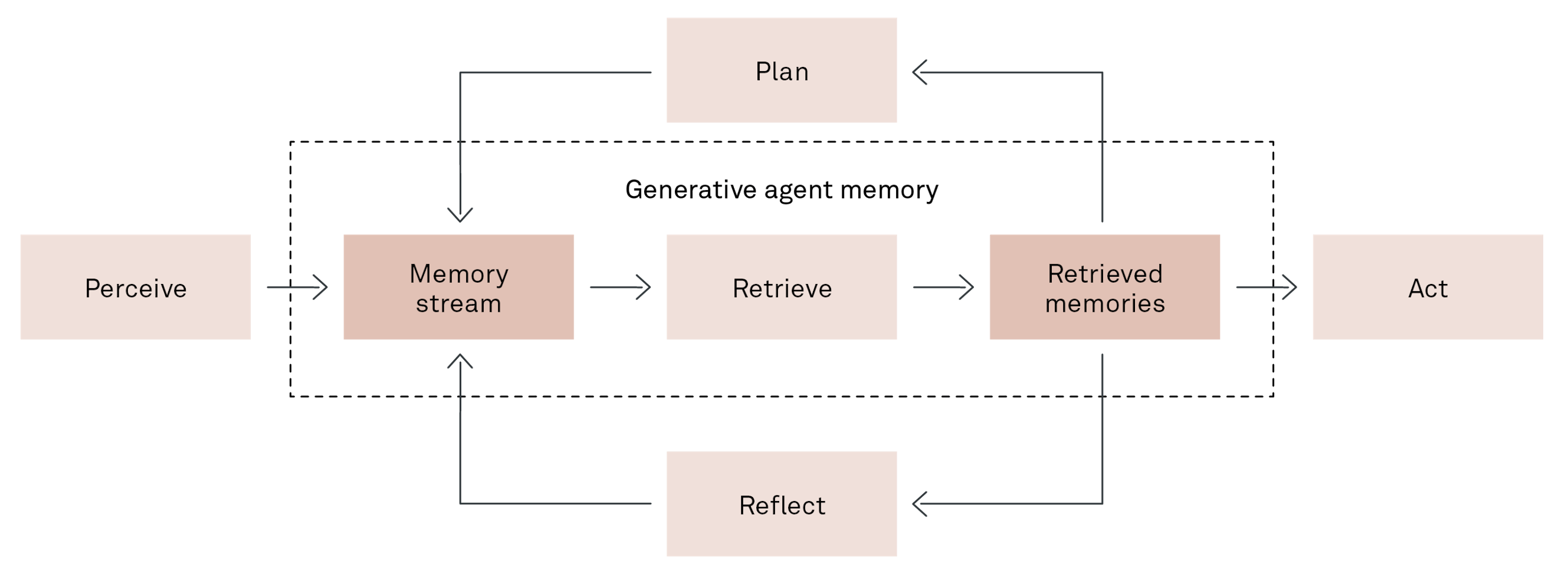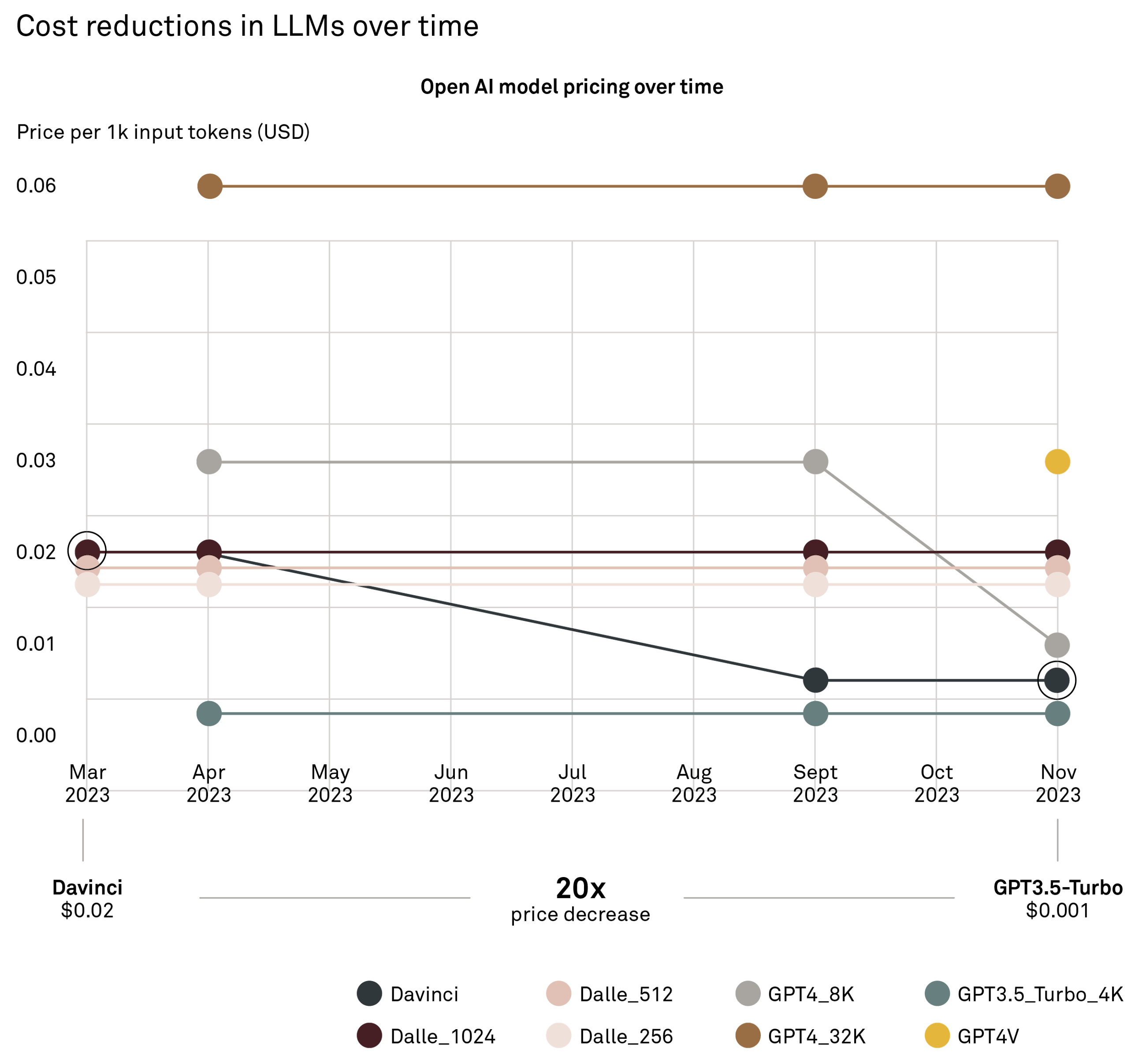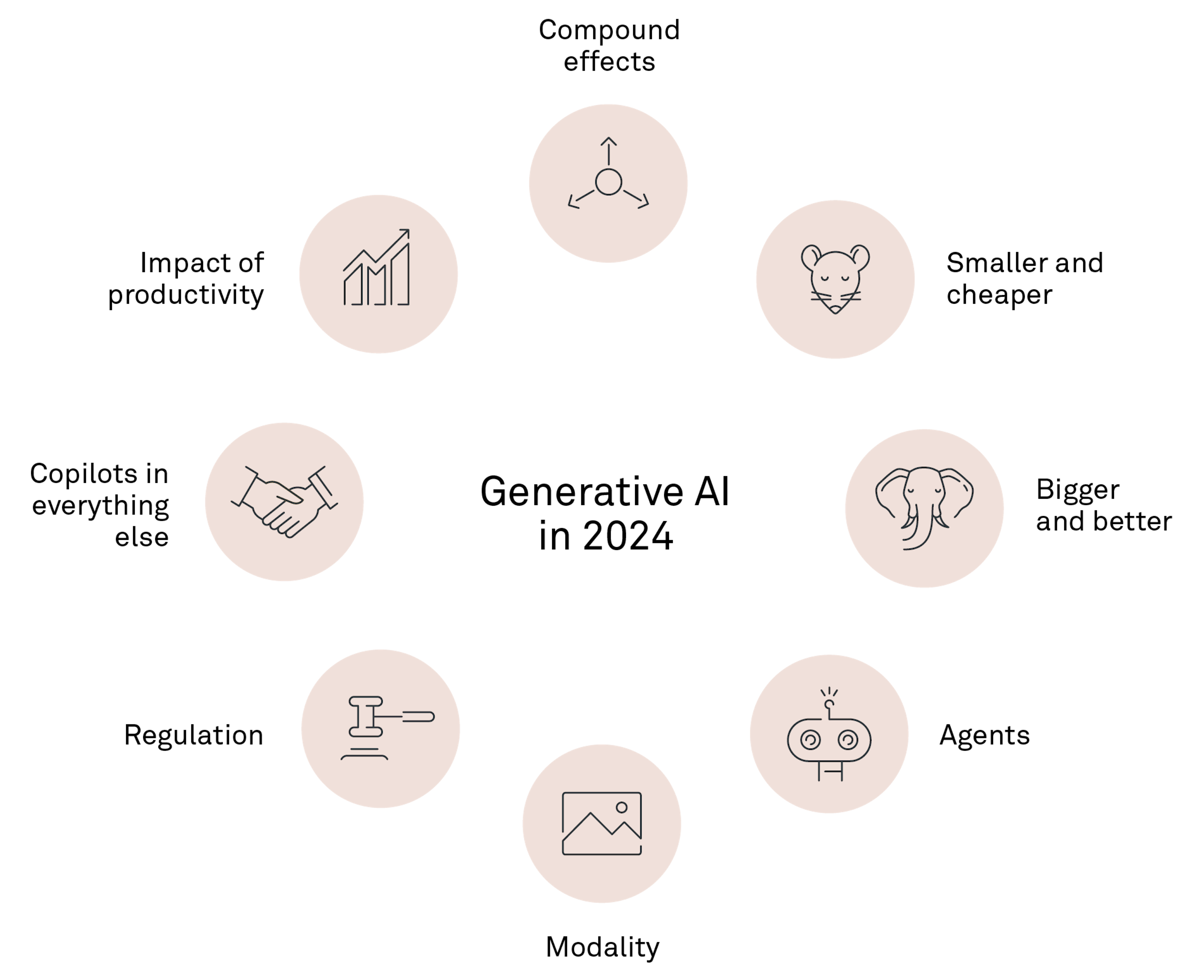What businesses and professionals can expect from AI
26 January 2024
With skyrocketing publicity over the last year, generative AI is set to become an even bigger part of how we do business in 2024.
We are looking into a year where AI’s impact on productivity will become clear, AI assistants will be integrated into more of our tools, and regulations are starting to catch up with technology. We will see AI that can handle different types of data, smarter AI agents that can do tasks on their own and larger models that can take on more complex problems. At the same time, smaller AI models are making the technology cheaper and more accessible.
All these developments are coming together in ways that will create new opportunities for businesses and change how we work.
In this article, you will get a grounded look at what to expect from AI in 2024 with a focus on the practical implications for businesses and professionals.
We will explore this through the eight trends we see as defining for generative AI in the year to come.
#1 The impact of AI on productivity
We know that AI affects productivity, but for most companies, the productivity impact of AI has not yet sunk into the competitive environment.
Soon, however, most companies will face a “new normal”.
Generative AI is changing how we work, and the effects are just starting to show up in the numbers. The biggest change is not at the top but across the board, where most employees are seeing real benefits from AI. It turns out that generative AI is democratising the technology. The ones with the lowest performance gain the most, and generative AI decreases the performance difference among people when it comes to speed, accuracy and the quality of solving tasks. Even top performers see increases in quality and speed most of the time, but the effect is dramatic when given to new or low-skill employees. This is levelling the playing field and bringing up some big questions about how we train and develop our workforce.
In 2024, we will really start to see which companies are getting ahead with AI and which ones are falling behind. It is a race to get more done with less, and those companies that move fast with AI stand to gain the most.
If you want to reap the full benefits of AI on productivity, it is not just about business – it is about people and making sure that everyone has the right skills to keep up with the new ways of working.
#2 Copilots in everything
Microsoft is adding copilots to everything. Everyone else is adding copilots to the rest. Startups are creating copilots for things that do not even exist yet.
But are copilots the right format?
Generative AI is popping up everywhere in business tools, and the idea is to make them like copilots – think of them as your right-hand assistant in software form. Microsoft is leading the change, but it is not just them; it is a whole trend. The aim is to give users a helper that is always on and ready to take on tasks and streamline work.
This fits right into a future where AI handles the heavy lifting while we steer the ship, ensuring things are done right. It is a partnership where humans and AI work side by side, and it is commonly known as “human in the loop”. In 2024, we will see this concept take off even more.
Many significant business applications are adding generative AI in “early 2024”, and several pure-play companies are launching commercial offerings, too.
Businesses that integrate these AI copilots effectively will see a boost in productivity, but if you want to make sure that the work meets your standards, it is key that you keep the human touch.
#3 Regulation
In 2023, we saw significant government interventions like the US executive order on artificial intelligence and the European deal on the EU AI Act, going into effect from 2025/26. Also, the New York Times vs OpenAI lawsuit is now rolling.
2024 will be the year we will begin to see the effects of government intervention on AI. The EU AI Act is setting the stage for a regulated AI environment, stressing a harmonised framework that emphasises security, compliance and human rights. This act is crucial as it categorises AI systems by risk, with generative AI receiving its own set of rules.
While the full effects of the EU AI Act will come into play in 2026, companies and governments are already gearing up for the change.
On top of that, high-profile legal battles like the New York Times vs OpenAI case will shine a spotlight on copyright issues in AI.
2024 will be the year when we see businesses scrutinise their AI strategies and start aligning with these new regulations to avoid hefty penalties and to ensure they are on the right side of the law.
#4 Modality
Already during 2023, AI models became able to analyse and create images and audio. 2024 will be the year we see the effects of especially image analysis.
Multimodal AI models are AI models that can understand and generate different types of media, such as text, images and audio. And these models are changing the game.
Google’s upcoming Gemini Ultra is set to challenge OpenAI’s GPT-4, potentially taking the lead in this space. Unlike earlier models that needed a mix-and-match approach to handle different media, Gemini Ultra is built to handle multiple types at once.
As we move through 2024, these advanced models will unlock new possibilities, making it easier to create and analyse content across various formats. The real impact of these capabilities will unfold as businesses and creators start to explore the full range of applications, from enhanced digital interactions to more sophisticated content creation tools.
#5 Agents
In labs around the world, we saw rampant experiments with AI agents during 2023, like OpenAI’s custom GPTs and Microsoft Copilot Studio. AI agents are now able to perform actions in the real world, like sending an invoice and creating an order. But it is the tip of the iceberg.
In 2024, we can expect this to increase in sophistication and to begin commercial roll-out.
We talk about AI agents when using large language models, and instead of having a turn-by-turn conversation with the user, these models are provided with a goal. Through self-reflection, planning and the formation of experience and memory, the agent interacts with systems and will attempt to achieve the goal.
Until now, AI agents have been too unreliable to use commercially, but signs are showing that this is changing.
In 2024, we can expect the first companies to deploy simple agents with the sophistication of the technology expected to increase dramatically over the years to come.
#6 Bigger and better
Bigger models have so far been better models, and we know from OpenAI that we are not done scaling yet.
In 2024, we can expect a GPT-5 (or something similar), and additionally, we will see another jump in quality.
The trend of “bigger equals better” in AI models is set to continue in 2024. There is still room to grow – as indicated by OpenAI’s insights into scaling laws – and by ramping up the size, data and computing power, we expect AI capabilities to leap forward without the need for new breakthroughs.
We are on track to see models like Gemini Ultra and possibly a GPT-5, each promising to outdo their predecessors. With every increase in size, these AI models are getting better at tackling complex tasks, challenging human expertise in various fields. The impact of these advancements could be vast and somewhat unpredictable.
In 2024, the conversations around the implications of such powerful AI will not only continue but will become more pressing as we start to see these new AI models in action – conversations that will also raise further questions on the sustainability of super-massive models.
#7 Smaller and cheaper
Throughout 2023, the price of a token has been dropping steadily. At the same time, we see open-source models of very modest sizes and requirements giving serious competition to the larger AI models. And all of these models interact to form compound effects.
In the realm of AI, 2024 is shaping up to be the year of the small yet mighty models. Microsoft’s Phi-2 is a prime example, offering strong performance with a fraction of the size and complexity of larger models like ChatGPT. The shift to an MIT license signifies a broader trend towards accessible and cost-effective AI solutions.
As the cost of running AI models continues to plummet, we are seeing a democratisation of AI, where smaller entities can leverage the technology just as effectively as the big players. This creates a competitive market where the right AI solution for a specific task is affordable and efficient. With operational costs nearing the bottom line, a surge in innovation is on the horizon, promising new applications that were previously unfeasible.
As 2024 unfolds, we expect to see a rich ecosystem of AI tools tailored to specific needs, reshaping industries and broadening the horizon for what is possible with AI.
#8 Compound effects
In 2024, we will see cheaper, better, more widespread AI, along with better user adoption and more advanced implementations. All of which leads to hard-to-predict outcomes for businesses.
All the AI models mentioned in this article do already and will continue to interact to form compound effects. If you want to harvest the full benefits of AI, it will become essential that you are aware of these compound effects and how they might multiply.
As examples of compound effects, we will see AI agents become feasible exactly because the bigger and most powerful models will have the capacity for complex reasoning. Copilots are going to be adopted as the regulatory environment clears up, and the three-way forces of better models, cheaper models and models with all-new modality capabilities will usher in as many or maybe more use cases in 2024 as we saw in 2023.
In trend number one, we touched upon the impact of AI on productivity. These productivity effects will increase as model sophistication and capabilities increase – even if we have not yet realised the potential of the current wave of technology.
Companies will innovate by leveraging and combining many of these into incredible new products and services, and employees will find new ways to improve their work throughout 2024.
Perspective
At OpenAI’s DevDay 2023, CEO Sam Altman said in his final note: “When we look back at a year from now, everything will look very quaint.” I believe he will be right.
We believe this article to be state-of-the-art knowledge in the field, but we are also keenly aware that it probably will not age well. However, businesses have to act, and this is our humble attempt to provide the best possible advice today. We promise to stand by our clients and partners as the situation in AI develops this year and in the future.
Want to know more?
We help you tap into the full potential of your data by leveraging the power of advanced analytics, artificial intelligence and business intelligence. In the digital transformation era, data-driven solutions and their insights provide a competitive edge and are drivers of growth and change.

